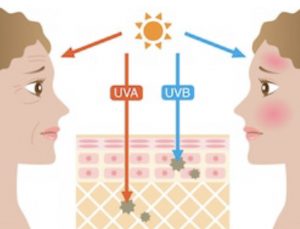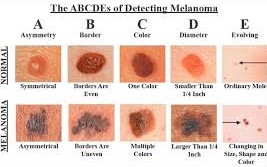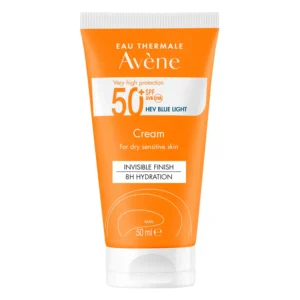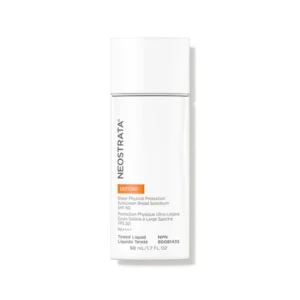
Are you honestly wearing sunscreen? A question that I always ask my patients as part of my skin consultation. Most admit that they are inconsistent or have not given the matter much thought.
Sunscreen is often added to the holiday checklist when planning summer breaks yet, not so much of a priority on a daily basis
So, how much thought do we now give regarding protecting ourselves against the damaging rays of the sun? After all, we still have to we are still exposed to the sun during our daily lives
In order to really understand the impact of sun rays, we need to understand what exactly are sun rays.
There are two main rays that are responsible for skin damage:

The effects of UV rays on ageing and burning
The UVA RAYS: These are the longest of the wavelengths and they tend to penetrate deeper into the skin where they impact the dermal layers of the skin. They are responsible for photo-aging, pigmentation, and textural changes of the skin breaking down collagen and elastin fibers leading to wrinkled slacked skin as well DNA damage.
The UVB RAYS: These are the shortest wavelengths and they target the epidermal layer of the skin. These waves are responsible for tanning the skin. Tanning occurs as a result of melanin. These are our natural umbrellas protecting the skin from harmful rays of skin. Excessive exposure leads to the burning of our skin.
HEV (blue light): More research is emerging linking it to skin damage. However, blue light is responsible for boosting mood, and alertness, and improving memory.
The difference between UVB and UVA is that UVA can penetrate throughout the year where it can penetrate through glass and on cloudy days damage our skin. Therefore, we do not need a sunny day to use sun protection. It should be incorporated throughout the year.
The effects of UV damage are detrimental to our skin but, what is far more decremental is the risk of skin cancer.

Changes in the appearance of a healthy mole
A healthy mole as seen in this would be round and symmetrical as compared to an unhealthy one is asymmetrical. There are other changes that affect the appearance and these include borders surrounding the mole, the color, and the diameter. In addition, they evolve.
This is known as the A.B.C.D.E rule
A: Asymmetrical
B: Border
C: Colour
D: diameter
E: Evolving
If you start to notice any difference in the appearance of your mole or if it starts to itch, bleed, or does not heal then, it is vital that you contact your doctor for assessment and diagnosis.
When using sunscreen, how can we select the right product?
Sunscreen formulations are divided into two different forms:
Inorganic: Known as physical
Organic: Known as a chemical
It is important to note, that organic, does not mean natural. All it means is that it contains a carbon atom in the formula.
The difference between them is the way that they are formulated and how they work. Originally it was thought that Organic Chemical filters absorb the energy of the UV rays and convert it into safer energy.
Avène Very High Protection Sun Cream SPF50+ for Dry Sensitive Skin is specifically formulated for dry, sensitive skin types, Avène’s Very High Protection Sun Cream SPF50+ provides high UVA, UVB, and blue light protection for the most exposed area, the face.
Fortified with an innovative ocean-friendly Triasorb™ sunfilter, the formula applies with a velvety, non-sticky texture, drying down to an invisible finish. Resistant to water, sweat, and sand, the sun cream offers high broad-spectrum protection and hydration for up to eight hours.
inorganic physical filters rest on top of the skin and deflect the light. An example of Inorganic filters are titanium dioxide and zinc oxide
Neostrata Sheer Physical Protection has a Lightweight, sheer, and easy to apply, this tinted mattifying fluid sunscreen features a powerful combination of SPF 50 broad spectrum protection against the look of UVA/UVB-induced aging with potent antioxidants and a Polyhydroxy Acid (PHA) complex to protect and strengthen skin’s moisture barrier against environmental aggressors. Formulated exclusively with mineral sunscreens Zinc Oxide and Titanium Dioxide, this formula does not leave creases, is not whitening and is compatible with makeup!
Gluconolactone: a Polyhydroxy Acid (PHA) that is found naturally in the skin and provides antiaging and gentle exfoliating benefits without sun sensitivity. It is a welcome choice for sensitive skin types as it strengthens the skin’s moisture barrier leaving it more resilient, while also providing potent antioxidant benefits.
Lactobionic Acid: part of the Polyhydroxy Acid (PHA) family and is derived from natural sugars. It helps to reduce the appearance of lines and wrinkles, discoloration, enlarged pores, and roughness through gentle exfoliation, while also attracting moisture for added hydration and comfort.
Ideal for anyone seeking a sheer tint mineral SPF. Sheer Physical Protection Sunscreen Broad Spectrum SPF 50 is appropriate for all skin types, especially sensitive skin.
Recent research has shown that both organic and inorganic filters work in similar ways.
The inorganic physical filters tend to be less irritating on the skin which serves as an advantage but may be more costly than the organic.
Is there a difference between the numbers of SPF on the sunscreen preparations?
The majority of patients that I see in my clinic only use sunscreen during the summer or combined with cosmetics or skincare in factor 15 (SPF 15).
Is SPF 50 better than SPF 30?
Sunscreen with an SPF15 then it will take 15 times longer for the sun to redden the skin. Similarly, if an SPF30 is applied to the skin then it would be 30 times longer for the sun to redden the skin. However, in terms of percentage protection,
SPF15 provides 91% sun protection
SPF30 provides 96% sun protection
SPF50 provides between 97-98% sun protection
Therefore, the difference in protection between factor 30 and factor 50 is 1.6-2%.
Doubling up the factors or increasing its numerical value will not double the total protection from UV rays.
The numerical value in sun protection only corresponds to the UVB-rays only
You will notice star ratings on your packaging of sun protection such as 3,4 or 5 and these demonstrate the level of protection against UVA rays.
Sunscreens must contain a UVA filter as well as a UVB filter to provide protection. This is known as broad-spectrum sun protection.
In reality, we could never have complete protection unless we ensure that we apply the correct amount of approximately two milligrams per square centimeter. To put it simply, half a teaspoon for the face.
Ensure a frequent and repeated application covering all the areas that are exposed including the ears. In addition, use protective clothing such as hats and sunglasses covering the areas that are most exposed to minimize exposure during intense sun exposure from 11 am to 3 pm.
So how do you reapply sunscreen after you wear makeup?
This is a common question that I get during my consultation as often there is a concern that the makeup will be removed or smudged. Fortunately, there are formulations that can address this concern ranging from sprays, powders, and creams.
My absolute favorite recommendation is the tone smart compact by Skinbetter science®. This is an amazing cream-to-powder formulation with physical filters that adapt to skin tone whilst providing total broad-spectrum sun protection.Get in touch to place your order.
science® Tone Smart advanced broad-spectrum protection factor 50
We all love the sun and love to bask in it but, we need to respect it and respect our skin. So, the take-home message is to ensure that you are adequately and fully protected.
Please source advice from skin experts with a clinical scientific background where their prime concern is your welfare rather than social media coverage with unfounded claims or misinformation.
Sunscreens will not stop the skin from tanning but only protect against burning and delays the signs of ageing and risk of skin cancer
All the treatments that I perform, where the client spends their hard-earned money to achieve skin health offer no value if, the skin is not protected and damage continues.
My final ask is to avoid at all costs using sunbeds as they can damage the skin and contribute to skin cancer.
For skincare recommendations click the link and explore our store









